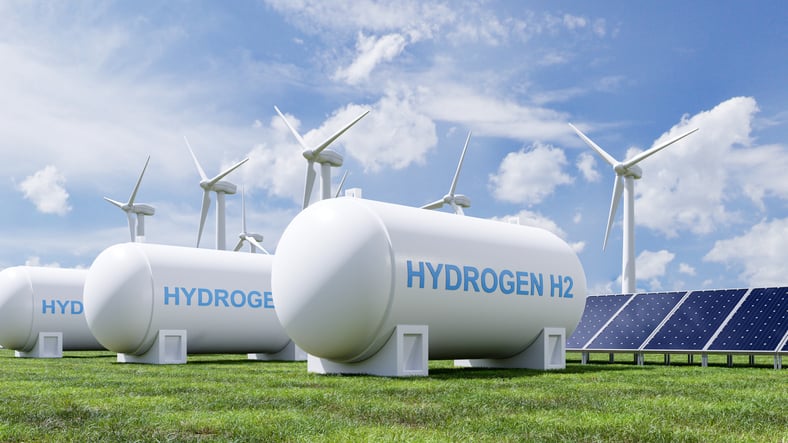In a recent announcement, industrial gas producer, Air Products, and global energy company, AES Corp. shared plans to invest approximately $4 billion to build, own, and operate a mega-scale green hydrogen production facility in Wilbarger County, Texas.
The massive renewable power to hydrogen project includes roughly 1.4 gigawatts of wind and solar power generation along with electrolyzer capacity capable of producing over 200 metric tons per day of green hydrogen. The company said this would make it the largest green hydrogen facility in the U.S.
The facility has a target launch date in 2027 and will serve growing demand for zero-carbon intensity fuels for the mobility market, including trucking, as well as other industrial applications.
According to the company, if all the green hydrogen were used in the heavy-duty truck market, it could eliminate about 1.6 million metric tons of carbon dioxide emissions annually compared to diesel. Over the lifetime of the project, it is projected to eliminate 50 million metric tons of Co2, the equivalent of avoiding emissions from nearly 5 billion gallons of diesel fuel.
“We are very pleased to announce this exciting joint venture with AES, which is one of the leading renewable energy companies in America,” said Seifi Ghasemi, Air Products’ chairman, president and CEO, “The new facility in Texas will be, by far, the largest mega-scale clean hydrogen production facility in the U.S. to use wind and sun as energy sources. We have been working on the development of this project with AES for many years and it will be competitive on a world-scale.”
“AES believes that green hydrogen has a key role to play in decarbonizing transportation and accelerating the future of energy,” added Andrés Gluski, AES president and chief executive officer.
Demand for green hydrogen for mobility and industrial applications is expected to grow exponentially across the U.S. in the coming years. The growth in demand is supported by green hydrogen’s role in aggressive net-zero goals announced by several states and major corporations.











